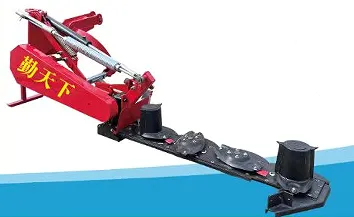Innovative Wheat Binder Machines for Efficient Agricultural Harvesting and Crop Management Solutions
The Wheat Binder Machine A Revolution in Agricultural Efficiency
Agriculture has always played a vital role in human civilization, serving as the backbone of food production and economic stability. As populations grew and industrialization took hold, the need for efficient agricultural practices became more pronounced. Among the many inventions that have transformed farming, the wheat binder machine stands out as a significant advancement in the harvesting process.
The wheat binder machine, also known as a binder, was first developed in the 19th century and fundamentally changed the way farmers harvested wheat. Before its invention, harvesting was a labor-intensive process that involved manual cutting of wheat stalks using sickles or scythes, followed by bundling them by hand. This method was not only time-consuming but also required a large workforce. The introduction of the wheat binder revolutionized this process by mechanizing the cutting and bundling of wheat, leading to significant improvements in efficiency and productivity.
At its core, the wheat binder machine is designed to cut wheat stalks uniformly and gather them into neat bundles, typically called sheaves. The machine operates by using a set of blades to sever the wheat stalks at the base, simultaneously tying them into bundles using twine or wire. This innovation allowed farmers to cover larger areas of land in a shorter amount of time. By reducing the manual labor involved, the wheat binder also helped to lessen the physical toll on farmers, making it easier for them to manage their crops.
wheat binder machine

One of the most notable benefits of the wheat binder machine is its impact on harvest time. Traditionally, harvesting wheat was a seasonal activity that required a significant investment of labor. With the introduction of the machine, farmers could now complete their harvests more swiftly, allowing for a more flexible agricultural calendar. This efficiency proved crucial, especially in regions where weather conditions could rapidly change. By minimizing the time wheat remained in the field after ripening, farmers could significantly reduce losses caused by rain or pests.
Moreover, the introduction of the wheat binder machine contributed to increased yields and improved grain quality. By efficiently cutting and bundling the wheat, the machine ensured that the grains were harvested at their peak ripeness. This not only maximized the quantity but also the quality of the grain, enhancing its market value. The impact on local economies was substantial, as improved yields led to greater food production and, in turn, increased sales and revenue for farmers.
The technological evolution of the wheat binder machine has continued into the 21st century, with modern iterations now being equipped with advanced features such as GPS tracking, automated settings, and enhanced cutting mechanisms. These advancements further streamline the harvesting process and reduce the need for manual intervention. Today’s machines can operate with increased precision, ensuring that farmers maximize their yield while maintaining the quality of their products.
In conclusion, the wheat binder machine stands as a testament to human ingenuity in agricultural technology. By revolutionizing the harvesting process, it has significantly enhanced productivity, reduced labor demands, and improved the quality of wheat produced. As technological developments continue to shape the world of agriculture, the legacy of the wheat binder machine serves as a foundation upon which future innovations can build, ensuring that farmers remain equipped to meet the challenges of feeding a growing global population. The machine not only symbolizes progress in farming practices but also the ongoing quest for efficiency and sustainability in agricultural production.
Latest news
-
When to Upgrade Your Old Forage HarvesterNewsJun.05,2025
-
One Forage Harvester for All Your NeedsNewsJun.05,2025
-
Mastering the Grass Reaper MachineNewsJun.05,2025
-
How Small Farms Make Full Use of Wheat ReaperNewsJun.05,2025
-
Harvesting Wheat the Easy Way: Use a Mini Tractor ReaperNewsJun.05,2025
-
Growing Demand for the Mini Tractor Reaper in AsiaNewsJun.05,2025







